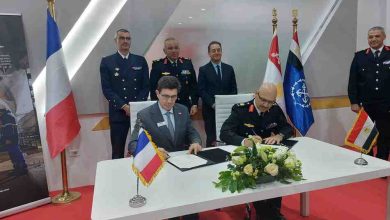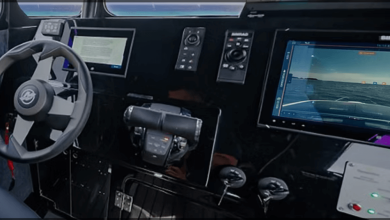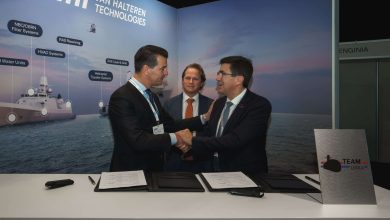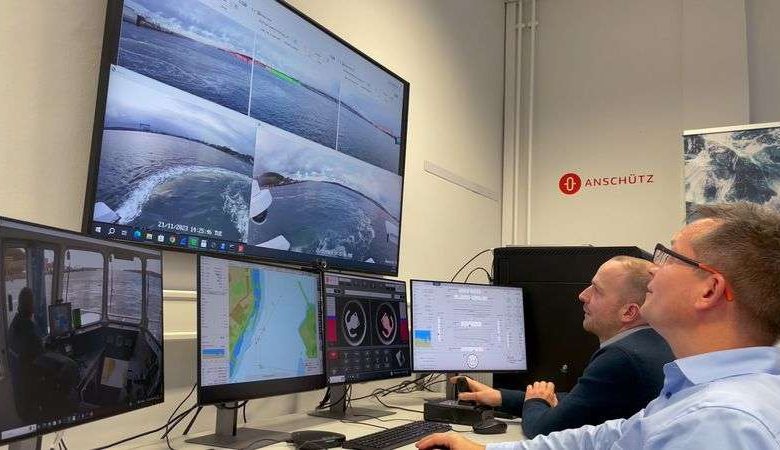
Anschütz Pioneers the Future of Self-Driving Bridge Technology
As a specialist in navigation and bridge technologies, Anschütz is developing solutions for (partially) autonomous systems and assistance frameworks onboard vessels that aid navigators, minimize errors, and ultimately enhance maritime safety and efficiency.
As part of the Clean Autonomous Public Transport Network (CAPTN) initiative, significant advancements in this domain have been realized in 2023. At the Remote Operating Centre (ROC) established onshore by Anschütz, the MV Wavelab is under constant surveillance. The Wavelab serves as a research catamaran engaged in operations on a maritime testing area located in the Kiel Fjord in Germany.
Integrating a comprehensive digital twin, the ROC encompasses all the data sourced from various present and experimental sensors and systems aboard the Wavelab. Effective remote navigation and maneuvering of the vessel, equipped with complete access to sensor data and the navigation, steering, and propulsion systems, has been successfully demonstrated across multiple environmental scenarios.
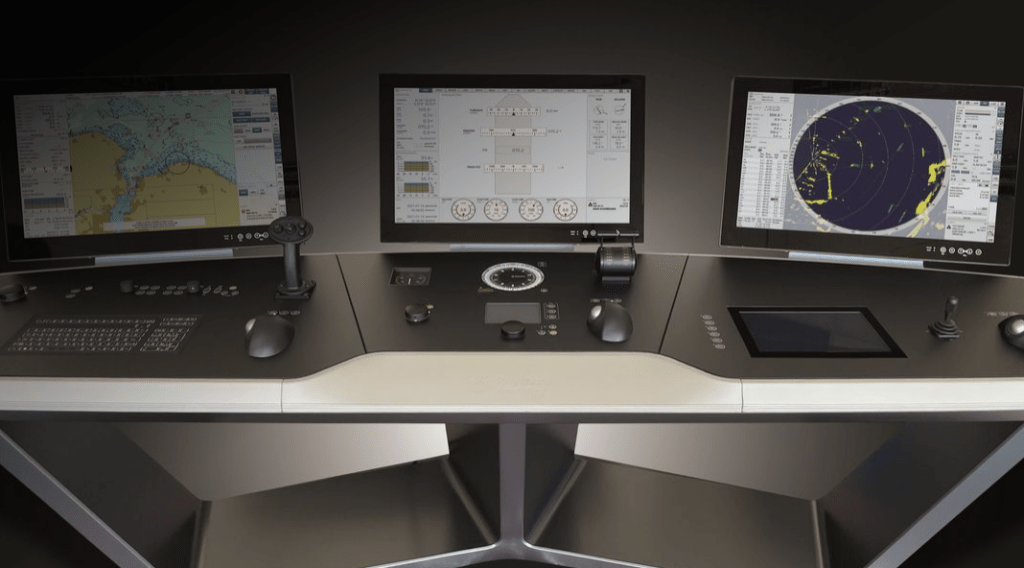
“Until now, our emphasis has been on identifying what information must be shown to users and how, to facilitate safe and efficient monitoring and remote control of a vessel,” stated Daniel Sommerstedt, Head of Research Projects at Anschütz. “Our objective now is to heighten the level of automation in the systems onboard so that we can ideally showcase the first autonomous navigation tests in Kiel by the close of 2024.”
The automation of the Wavelab’s control and propulsion systems is presently advancing rapidly. The Electronic Chart Display and Information System (ECDIS) collaborates with the autopilot to allow remote manipulation through heading control, in addition to largely autonomous navigation aided by track and speed controls. To facilitate future automatic docking, proficiency in low-speed maneuvering is a focus for further research excursions.
“Supplementary assistance remains essential. Within our Remote Operating Centre, we analyze data from novel sensors and innovate new functions that we can operate on our bridge platform. This will allow us to enrich the overall maritime landscape with supplementary insights, including clear recommendations for navigators,” noted Sommerstedt.
The assistance frameworks to be conceived and evaluated in the upcoming project phase in 2024 encompass collision avoidance scenarios derived from artificial intelligence combined with rule-based and model-based methodologies. A maritime situation assessment will comply with IMO collision avoidance regulations, utilizing track and own ship data. Initially, users will receive a recommendation on whether to maintain their course or initiate an evasive maneuver. Subsequently, the system will compute and exhibit trajectories that can be automated over the long term.
Through the continuation of the project, various sensors will be examined within specific scenarios to evaluate how effectively they enhance situational awareness and thus simplify secure navigation and steering. This includes, for example, radar, video, and light detection and ranging sensors, instruments for bearings and distance determination, as well as systems for automatic object detection and classification.
“The research endeavors within the CAPTN initiative provide a unique opportunity for designing and testing innovative ship sensors and systems alongside industry and academic partners in a genuine maritime testing environment for autonomous vessels,” explained Sommerstedt. “Our goal is to advance navigation technologies that are prepared for certification, ultimately making maritime transport safer, more efficient, and adaptable in terms of crew deployment strategies.”
CAPTN’s vision aims to foster autonomous, safe, and environmentally friendly public transport networks. CAPTN strives to interconnect the eastern and western shores of the Kiel Fjord with autonomous, low-emission passenger ferries. A consortium of leading enterprises and universities is pioneering the necessary technologies through a series of individual projects funded by the German Federal Ministry for Digitalisation and Transport.
As part of the CAPTN Fjord Area I research initiative, the research catamaran Wavelab has been constructed, recognized as the largest research vessel for autonomous navigation in Germany within its class designation. The navigational foundation of the Wavelab relies on the SYNAPSIS NX Integrated Navigation System from Anschütz, incorporating radar systems, ECDIS, intelligent data and alarm management, along with autopilot tools. The setup also incorporates optical sensors and CCTV systems and enables data interchange with the ROC at Anschütz, inclusive of route, obstacle, and destination information to facilitate remote observation and trials of autonomous navigation.
In the Fjord 5G research initiative, the project collaborators have established a robust infrastructure for maritime data communication based on a 5G mobile network coupled with a high-performance WiFi-6 network on the Kiel Fjord.
With the subsequent project CAPTN Fjord Area II underway, the next phase has commenced, which will allow extensive research and development initiatives concerning autonomous navigation on the Kiel Fjord in the long run. Additional research undertakings are currently being planned within the CAPTN initiative.
Project collaborators include Anschütz GmbH, Addix GmbH, the University of Applied Sciences of Kiel, Christian-Albrechts-Universität zu Kiel (CAU), FuE-Zentrum FH Kiel GmbH, and the Science Center (WiZe) Kiel GmbH.



